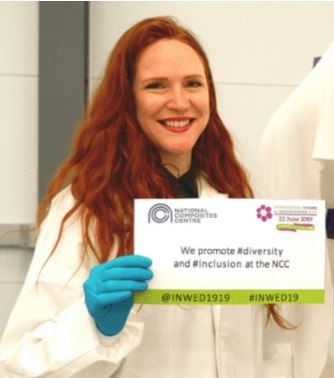Planes, trains and automobiles… Can polymer composites help in the quest to secure a sustainable future for these modes of transport? The universally recommended method to decide with scientific certainty is with a life cycle assessment (LCA), collecting all possible material and energy inputs and outputs, throughout a product’s life, from raw materials mining to recycling scenarios, and translating them into meaningful ecological impacts. The subject of my PDS research is to scrutinise the various LCA methodologies and examine how they are best applied to composites, a non-traditional but increasingly popular material in the high-value manufacturing industry.
Last week a two-day conference called EcoComp was held at the Hilton in Coventry, specifically configured to reflect the complete life cycle of composite products, and presented by NetComposites, the global composite industry news giant. This small yet specialised conference gave a platform to around 50 to 60 delegates, from all over Europe and beyond, working as academics, designers, producers, manufacturers, end-users and entrepreneurs within the field of composites.
Ideas and observations were shared on structured topics such as environmental imperatives within composites, from their raw materials, intermediate material design and manufacture through to end of life and recycling.
Considering the relevance to my research, this conference was too good to miss, yet I was also fortunate enough to be given 20 minutes to present to the delegates an introduction to the research and sustainability commitments of my industrial sponsor, the National Composites Centre (NCC). This was my moment to open the curtains to the world and place my work on a stage for the first time, to a group of highly established strangers for scrutiny. No pressure.
Whilst this was my first conference, it was not my first time presenting. The University of Surrey’s Practitioner Doctorate in Sustainability program within the Centre for Environment and Sustainability (CES) put me through a three-month training program which involved weekly presentations to my peers. Sweaty palms aside, I learned from this experience the power of not reading from your notes, instead focusing attention on the audience and making more eye contact for greater impact. However this is always easier said than done and practise is the only way to improve. That being said, my presentation was well-received and the content attune with the themes from other speakers at the conference.
Big trends that echoed throughout EcoComp was the longer term need to move towards bio-composites, considering hemp or flax as reinforcement, and some of the bio-based resins that are slowly emerging. Recycling is a hot topic at the moment, confirmed by a resounding nod of agreement for end of life strategy to be incorporated at an earlier stage, and of course, by completing a full life cycle assessment.
The keynote speaker from the European Composites Industry Association (EuCIA) presented their free Eco Calculator tool that provides quick and easy LCA results using data collected and verified from industrial partners. Limited to cradle-to-gate at the moment, EuCIA encouragingly reassured us that cradle-to-grave calculations are in their pipeline and will be included on the tool soon.
We also heard from FIAT, the Italian car giant, who explained some of the strategies they are adopting to comply with the EU’s regulation for all end-of-life vehicles, where a minimum of 95% by an average weight per vehicle will be reused or recovered. The challenges with the recycling of composites are particularly felt by the automotive industry, and whilst new methods are being improved upon all the time, there is no real performance or life cycle inventory data to measure their impact yet.
Unfortunately I noticed a distinct lack of representation from the aerospace sectors, a heavy investor in composites for their light-weighting benefits, in addition to being a large emitter of greenhouse gases. This is an industry that NCC have great involvement with, developing innovative glass and carbon fibre composite components that replace traditional heavier materials.
To conclude, I spent an inspiring two days in Coventry and made connections between companies, objectives, faces and policies. The ideas we discussed and business cards we exchanged has motivated me that there is a real appetite for a clearer understanding of LCA methodology for composites and I have received a huge injection of motivation. My LinkedIn page has been completely rejuvenated and with careful management will add value to the wider impact of my research.
Please see the news feature on the University of Surrey website that used my attendance at the EcoComp conference to celebrate International Women in Engineering Day.
A huge thanks to my industrial supervisors at NCC, Dr Tim Young and Dr Annabel Fitzgerald, for their continued support in preparing my presentation and funding my journey, and to everyone at the CES for taking a gamble on me for this research and for thoroughly preparing me for these unique moments.



